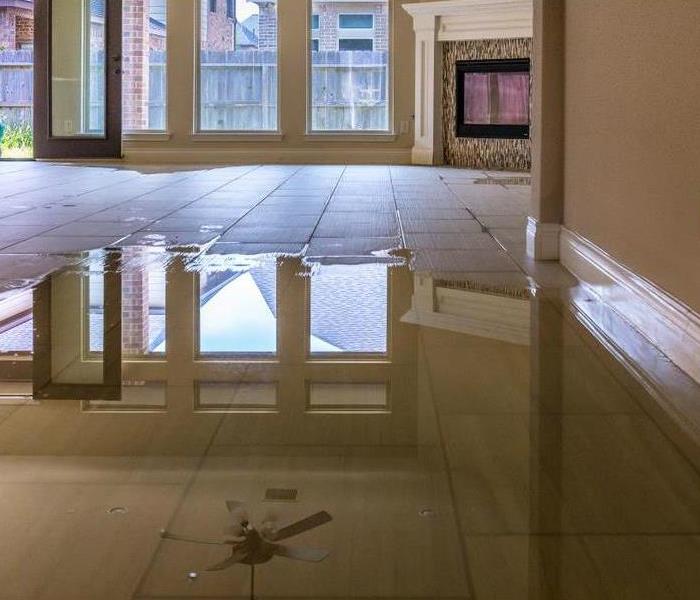How To Know Materials Need To Be Replaced
9/11/2019 (Permalink)
A flooded home can lead to many problems. If materials in your home get waterlogged, you may see buckling or swelling wood. Water mitigation specialists in Summit, Lake, Park & Eagle Counties, CO, can determine whether the materials can be repaired or must be replaced. Here are some of the questions involved in that decision.
Is It Saturated?
There is a difference between a floor or wall that is merely wet and one that has been completely saturated with water from a supply line leak. Some signs that your hardwood floors have taken on water damage include:
Cupping, evidenced by uneven edges
Bulging, evidenced by bowed shape
Buckling, evidenced by detachment from the floor underneath
Boards or other materials that are significantly damaged will probably have to be replaced.
Can It Be Dried?
Technicians will likely set up industrial fans or other means of increasing air flow to the flooded area. This drying process helps them determine what can be dried and salvaged. Slightly swelling wood that retains its shape after being dried may be able to be affixed or nailed back into place. Other items may dry on the surface but still remain warped or show lasting signs of damage. These materials will probably need to be replaced. If a large portion of the floor or wall is damaged beyond repair, it may be less expensive to replace the whole floor or wall rather than try to make new boards or materials fit.
Can It Be Cleaned?
If you have a leak from a clean water source, such as a pipe or supply line, technicians probably won't have to clean the materials to restore them. They can usually just be dried after water pipe repair has been completed. If the water has become contaminated, however, cleaning is necessary in order to avoid secondary damage. Once mold or other extended damage occurs, the affected materials will probably have to be replaced.
Certified experts can determine whether or not the swelling wood in your floors requires repair or replacement.






 24/7 Emergency Service
24/7 Emergency Service
